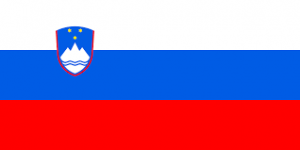Language/Slovenian/Grammar/Conditional-perfect-tense
Welcome to this Slovenian Grammar Lesson on the Conditional Perfect Tense!
The conditional perfect tense is one of the compound tenses in Slovenian, the others being the present perfect, past perfect, and future perfect. The conditional perfect tense is used to describe an action that would have been completed if a certain condition had been met.
Forming the Conditional Perfect Tense[edit | edit source]
To form the conditional perfect tense in Slovenian, we need to use the auxiliary verb "biti" (to be) or "imeti" (to have) in the conditional mood, followed by the past participle of the main verb.
Here is how to form the conditional perfect tense in Slovenian:
| "Biti" Conjugation | "Imeti" Conjugation | |
|---|---|---|
| 1st person | bi bil/a imel/a + past participle | bi bil/a imel/a + past participle |
| 2nd person | bi bil/a imel/a + past participle | bi bil/a imel/a + past participle |
| 3rd person | bi bil/a imel/a + past participle | bi bil/a imel/a + past participle |
The past participle of a verb in Slovenian is formed by adding the suffix -l to the stem of the verb. For example, the past participle of the verb "govoriti" (to speak) is "govoril".
Let's take the verb "govoriti" as an example and form the conditional perfect tense:
| "Biti" Conjugation | "Imeti" Conjugation | |
|---|---|---|
| 1st person | bi bil/a imel/a govoril/govorila | bi bil/a imel/a govoril/govorila |
| 2nd person | bi bil/a imel/a govoril/govorila | bi bil/a imel/a govoril/govorila |
| 3rd person | bi bil/a imel/a govoril/govorila | bi bil/a imel/a govoril/govorila |
As you can see, we use the auxiliary verb "biti" or "imeti" in the conditional mood, followed by the past participle of the main verb.
Usage of the Conditional Perfect Tense[edit | edit source]
The conditional perfect tense is used to describe an action that would have been completed if a certain condition had been met. It is often used to describe hypothetical or imaginary situations. Here are some examples:
- Če bi vedel/a, bi že bil/a prišel/a. (If I had known, I would have already come.)
- Če bi imel/a denar, bi kupil/a novo kolo. (If I had money, I would buy a new bike.)
- Če bi šel/a na dopust, bi že bil/a sproščen/a. (If I went on vacation, I would already be relaxed.)
In each of these examples, the conditional perfect tense is used to describe an action that would have been completed if a certain condition had been met.
It's important to note that the conditional perfect tense is not used as frequently in Slovenian as it is in some other languages. Instead, the conditional mood is often used to describe hypothetical or imaginary situations without using the past participle.
Conclusion[edit | edit source]
The conditional perfect tense is an important tense in Slovenian grammar, used to describe an action that would have been completed if a certain condition had been met. It is formed using the auxiliary verbs "biti" or "imeti"
in the conditional mood, followed by the past participle of the main verb. The conditional perfect tense is often used to describe hypothetical or imaginary situations. However, it's important to note that the conditional perfect tense is not used as frequently in Slovenian as it is in some other languages. Instead, the conditional mood is often used to describe hypothetical or imaginary situations without using the past participle.
Overall, the conditional perfect tense is an important aspect of Slovenian grammar, and it can help to add depth and nuance to your communication in the language. Whether you're talking about hypothetical scenarios or reflecting on what could have been, knowing how to use this tense effectively can help you to better express your thoughts and ideas in Slovenian.
Other lessons[edit | edit source]
- The subjunctive mood and modal verbs
- Conjugation of verbs in the present tense
- Possessive Pronouns
- Conjugation of verbs in the past tense
- Perfect tense
- Conjunctions
- Give your Opinion
- Comparative and Superlative Adjectives
- Pronouns
- Prepositions
- Nouns, articles and gender
- Negation
- Pronouns and their use
- Imperfect past tense
- Adverbs

